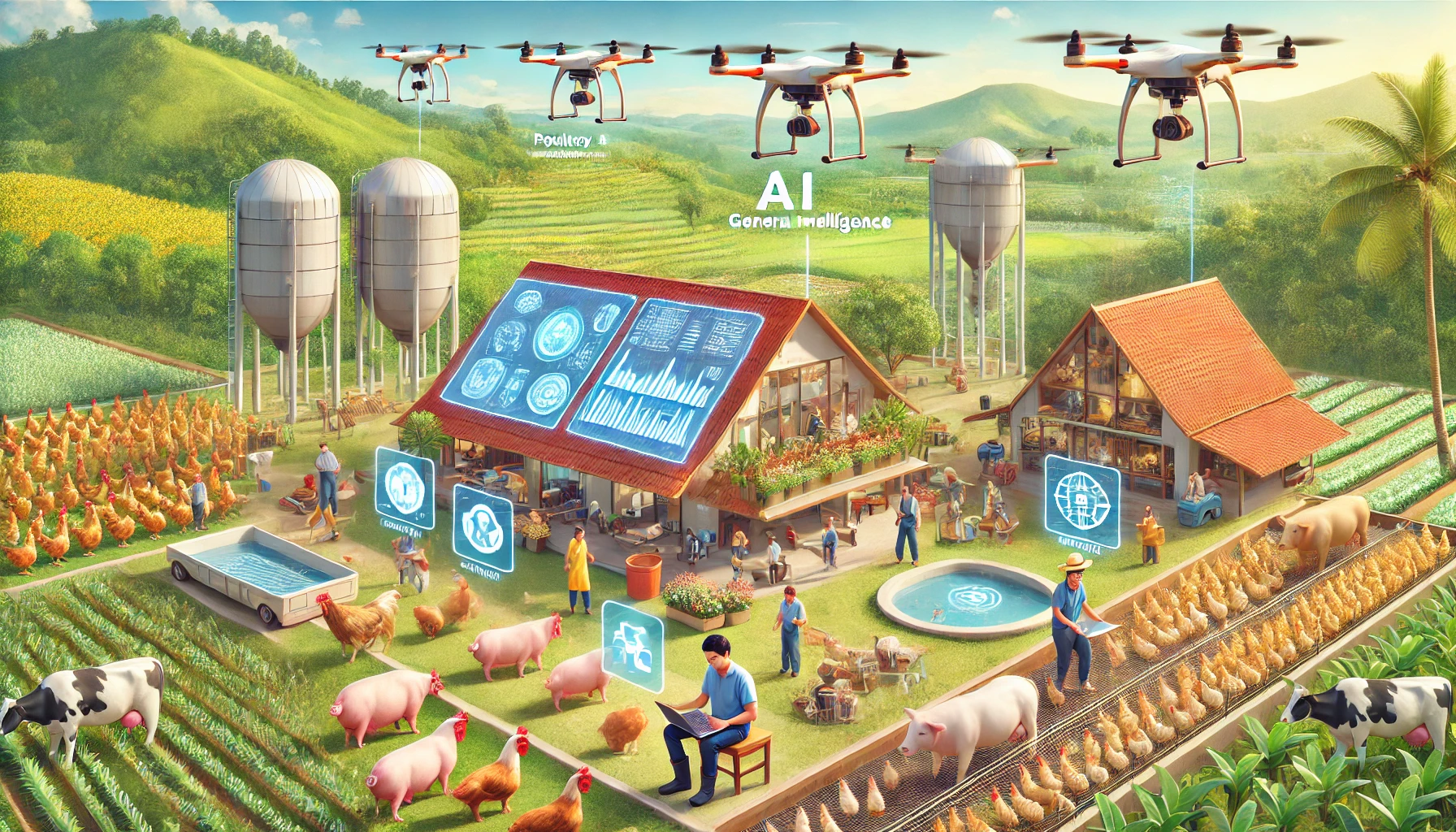The agricultural sector in the Philippines plays a vital role in the nation’s economy, with poultry and livestock being key contributors. However, the industry faces challenges such as rising costs, disease outbreaks, fluctuating demand, and supply chain inefficiencies. Artificial General Intelligence (AGI), an advanced form of artificial intelligence, has the potential to revolutionize this sector, enabling producers to maximize profits while improving efficiency and sustainability.
What is AGI?
AGI refers to highly advanced AI systems capable of understanding, learning, and performing tasks across a wide range of domains, similar to human intelligence. Unlike traditional AI, which is designed for specific tasks, AGI can adapt and improve without requiring explicit reprogramming.
Applications of AGI in Poultry and Livestock Production
- Precision Farming
- AGI can analyze vast amounts of data from IoT devices, drones, and sensors to optimize feed, water, and medication schedules.
- Producers can monitor livestock health in real-time, identifying early signs of disease and reducing mortality rates.
- Smart Feeding Systems
- AGI-powered systems can tailor feeding regimens for individual animals based on weight, age, and health data, reducing waste and maximizing growth rates.
- Predictive analytics can help producers anticipate feed requirements, minimizing overstocking and understocking.
- Disease Prevention and Control
- AGI can process data from global disease outbreaks and local environmental conditions to predict potential threats.
- Early warning systems powered by AGI can alert farmers to take preventive measures, reducing the risk of large-scale losses.
- Market Trend Analysis
- By analyzing global and local market data, AGI can help producers identify profitable trends, such as increasing demand for organic or free-range products.
- Real-time price forecasting enables better decision-making on when to sell or stockpile products.
- Supply Chain Optimization
- AGI can streamline logistics by analyzing transport routes, storage conditions, and demand fluctuations.
- Predictive maintenance for machinery and vehicles reduces downtime and operational costs.
- Labor Efficiency
- AGI can automate repetitive tasks, such as monitoring animal behavior, cleaning facilities, and recording data, freeing human workers for higher-value tasks.
Economic Benefits of AGI for Producers
- Reduced Operational Costs
- Automation and predictive analytics minimize waste and inefficiencies.
- Energy-saving measures driven by AGI reduce utility costs.
- Higher Yields
- Optimized feeding and health monitoring lead to better growth rates and higher quality products.
- Disease prevention strategies protect livestock investments.
- Enhanced Profit Margins
- Accurate market insights allow producers to capitalize on high-demand periods.
- Cost-effective resource management increases overall profitability.
- Sustainability and Eco-Friendliness
- Efficient resource use reduces the industry’s environmental impact, appealing to eco-conscious consumers and potentially unlocking new markets.
Challenges to AGI Adoption
- High Initial Investment
- Implementing AGI-powered systems requires significant upfront costs, including infrastructure, software, and training.
- Technical Expertise
- Producers may need to partner with tech firms or hire specialists to implement and manage AGI solutions.
- Data Security
- Protecting sensitive farm and market data from cyber threats is critical for sustained operations.
How Producers Can Get Started with AGI
- Partner with Tech Providers
- Collaborate with AI companies offering scalable AGI solutions tailored to agricultural needs.
- Invest in IoT and Data Collection
- Install smart sensors and devices to collect real-time data on livestock health, feed levels, and environmental conditions.
- Start Small
- Begin with pilot projects to test the effectiveness of AGI in specific areas, such as feeding systems or disease monitoring.
- Seek Government and Private Funding
- Leverage financial support from government programs, agricultural cooperatives, or private investors interested in sustainable farming.
- Train Workforce
- Educate farmworkers on how to use and maintain AGI-powered systems effectively.
Conclusion
Artificial General Intelligence offers transformative opportunities for poultry and livestock producers in the Philippines. By adopting AGI-powered solutions, producers can enhance productivity, reduce costs, and tap into new markets. While challenges exist, strategic investments and partnerships can pave the way for a more profitable and sustainable future in Philippine agriculture. Early adopters stand to gain a competitive edge, setting the stage for a thriving and resilient industry.
[SEO optimized]


